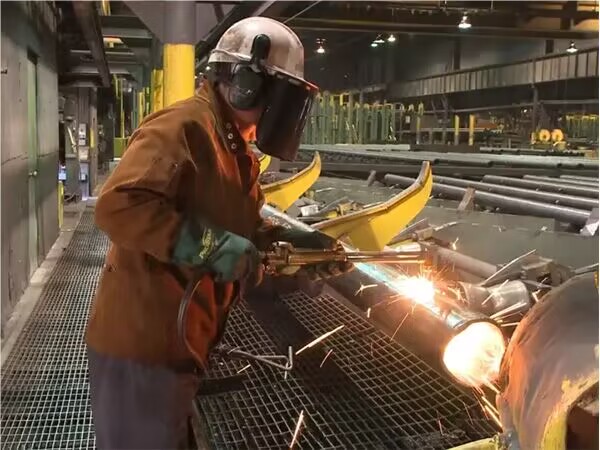How to deal with the weld of welded steel pipe?
Welded steel pipes are often used in industrial production, mechanical manufacturing and daily life, and welded steel pipes have an obvious feature - clearly visible welds. The treatment of the weld is a very important link, which can directly affect the service life and safety performance of the steel pipe. The following is a detailed analysis of the weld treatment of ERW, LASW and SSAW welded steel pipes:

1.ERW steel pipe (resistance welded steel pipe)
Weld characteristics
High frequency resistance welding technology, without the use of filler metal, mainly rely on high frequency current to quickly heat the contact point to a molten state, and through the pressure to complete the welding. The weld is located on the longitudinal central axis of the steel pipe.
Weld treatment
(1) Weld residual high treatment: After the welding of ERW steel pipe, the internal and external welds will produce weld residual high, usually using the internal and external weld scraping device for mechanical removal, so that the internal and external surfaces are smooth.
(2) Heat treatment: In order to eliminate the stress generated in the welding process and the uneven structure of the weld zone, local annealing treatment is carried out on the weld and heat affected zone.
(3) Non-destructive testing: In order to ensure the quality of the weld, online eddy current testing and ultrasonic testing are usually carried out in the production process of ERW steel pipes to find small defects in the weld.
2.LSAW steel pipe (straight seam submerged arc welded steel pipe)
Weld characteristics
Using submerged arc welding process, using filler wire and flux for welding, the weld quality is higher.
The welds are mostly straight and usually go through multiple welding processes, including fill welding and cover welding.
Weld treatment
(1) Grinding and shaping: After welding, the residual height of the weld is polished and reshaped to make the smooth transition between the weld and the base material and reduce the stress concentration point.
(2) Heat treatment: overall heating or local heat treatment of the weld and its heat-affected zone to improve the mechanical properties of the weld zone, reduce welding stress and improve crack resistance.
(3) Non-destructive testing: ultrasonic testing and X-ray testing are used to detect 100% of the weld to ensure that the weld is flawless.
(4) Weld repair welding: If weld defects are found, manual repair welding will be carried out to ensure that the weld fully meets the standard requirements.
3.SSAW steel pipe (spiral submerged arc welded steel pipe)
Weld characteristics
The weld of the SSAW steel pipe is spiral, and the welding process also adopts the submerged arc welding process, which usually requires internal welding and external welding. The length of the weld is longer, so the stability of the welding quality is higher.
Treatment of welds
(1) Weld residual high treatment: by grinding or scraping treatment of weld residual high, reduce the erosion and corrosion of the pipeline transport medium on the weld.
(2) Heat treatment: local heat treatment of welds and heat-affected zones to improve toughness and uniformity and reduce residual stress.
(3) Non-destructive testing: ultrasonic testing, magnetic particle testing or X-ray testing is used to strictly test the internal and surface quality of the weld, focusing on the investigation of pores, cracks and other defects in the weld.
(4) Automatic welding repair: After finding weld defects, repair by automatic welding machine or manual welding to ensure that the quality of weld is up to standard.
Conclusion
Weld treatment is the key to the performance of welded steel pipe: ERW steel pipe through residual height removal and local annealing to ensure smooth transmission; LSAW steel pipe strict heat treatment and non-destructive testing to ensure high pressure and large diameter safety; SSAW steel pipe fine weld treatment and comprehensive inspection to meet the needs of high stability over long distances.
